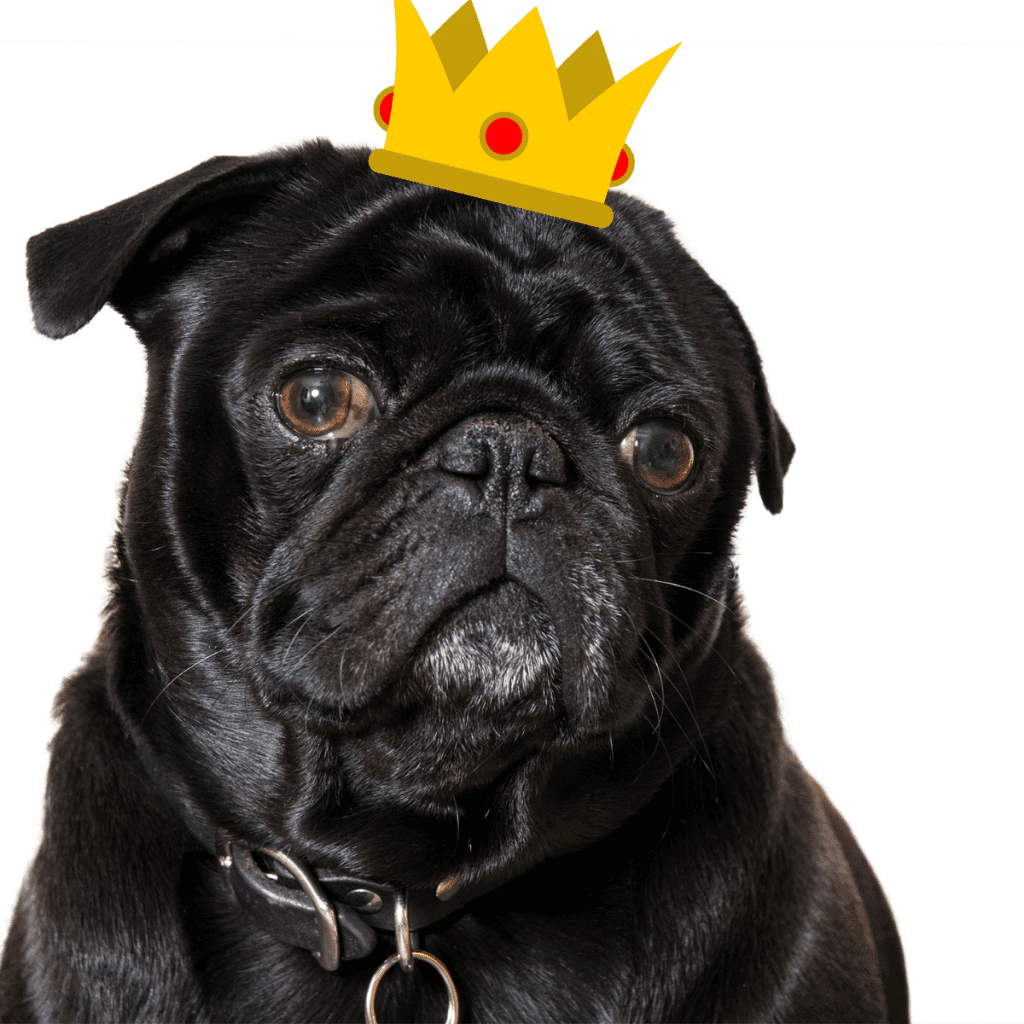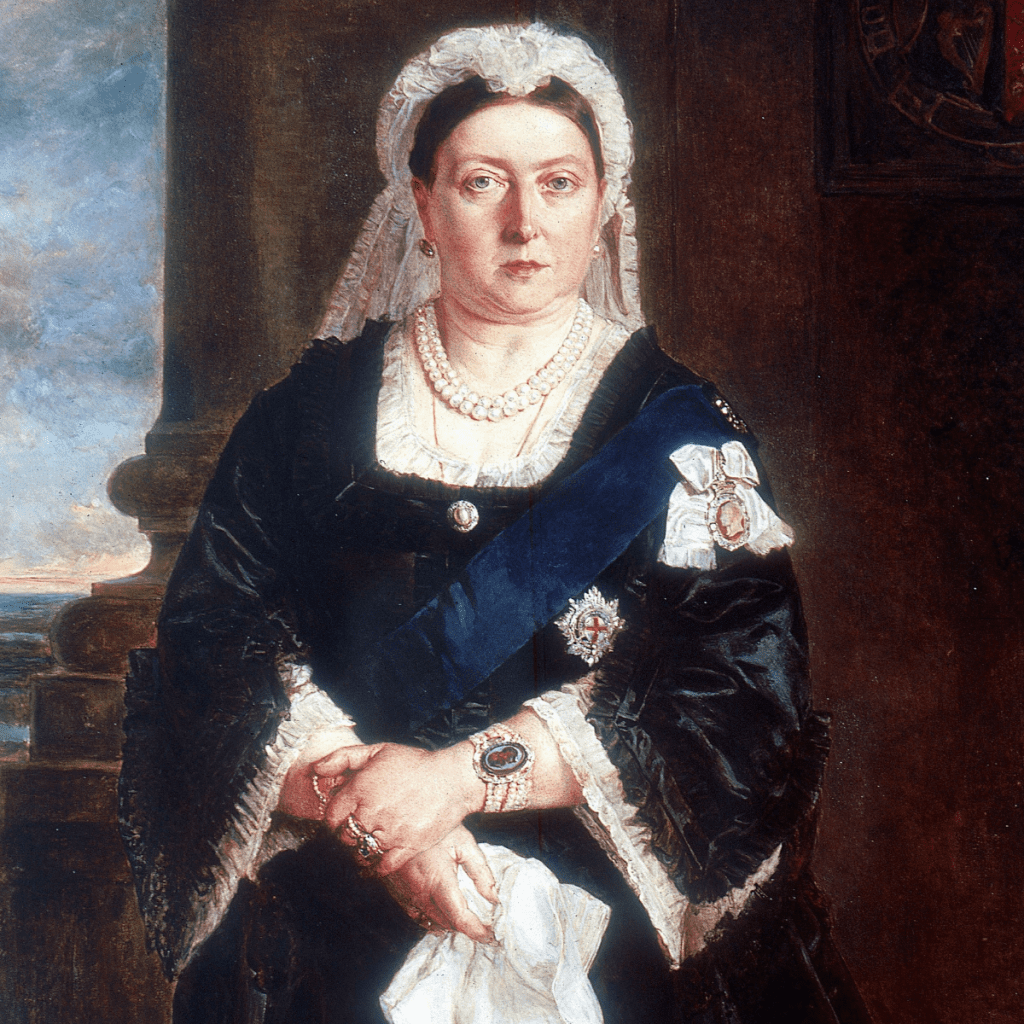Some dog breeds have changed their purpose over the years. That cannot be said about the pugs. These affectionate, cheerful and playful little dogs are one of the oldest breeds that are still popular today. The only motto of their breed is to keep us company. Unlike most other dog breeds, pugs were never bred to become hunters. The motto of the dog is the Latin phrase, “multum in parvo” ( a lot in a little).
It is a perfect description of this small and muscular dog breed. The distinctive short-muzzled wrinkly face and the curled tail are the features that helped this dog breed to create its mark. These dogs come in three different colours; apricot-fawn, silver and black.
With their large eyes and wrinkly face, the pugs can express different human-like expressions, like happiness, curiosity and surprise. The breeders think that these expressions are one of the factors that kept the Pug so close to humans for centuries.
Recommened Read: When Do Pugs Baby Teeth Fall Out?
History
Where did the Pugs come from? It is a question that has kept pug lovers puzzled for many years. There were debates about the origin of this dog breed. While some people thought that pugs were created in the far East, others opined that the breed was developed in Europe.
However, this debate is put to bed by the researchers. They have proved that the pugs were brought from China to Europe in the sixteenth century. Since then, it has become one of the most popular dog breeds in Western countries. While the pugs are very relevant even today, however, the root of this ancient breed can be traced back to about 2000 years.
400 B.C.

The roots of the ancient dog date back to this time and these dogs boast about a very noble lineage. There is a breed of dog in China that is known as Happa ( also called Ha-pa). This dog breed is very similar to the smooth-coated Pekinese breed.
Many people believe that the pugs are the descendants of the breed Happa. The short mouthed dogs, like the Pug, are quite popular in China. These dogs are called Lo-sze. While these dogs might have been found in 1115 BC, however, the first record of the breed could not be found until 663 BC.
960-1279

During the rule of the Song Dynasty in China, pugs were regularly found in the imperial courts. The emperors of ancient China loved toy dogs with flat faces. The Pug, Shih Tzu, and Pekingese were all developed as a refined pets of the Chinese emperor, the royal families, and the members of the royal court. During this time, these dogs were only bred for wealthy families.
The emperors valued these dogs greatly, and the royal dogs were kept in all the possible luxury. These dogs were tended by the servants and were guarded by soldiers. Due to their people-pleasing nature, the pugs became one of the favourite lapdogs of the Chinese royal families.
Later, the pugs were spread to different parts of Asia. The pugs were known to give company to the Tibetan Buddhist monks in the monastery.
15th Century

The Dutch traders introduced Pugs to different parts of Europe, especially Holland. Here again, the pugs became a hit in the royal families. There is a legend that the Pug even became the official dog of the Royal House of Orange. This honour was because a Pug saved the life of the Prince of Orange by barking a warning to alert the Prince about an assassin attack.
16th Century
Pug arrived in England along with William III and Mary II of Orange. As they came to England to assume the throne in 1688, a pug travelled with them to England. Here, the Pug again became a favourite of the English Royals.
During this time, the pugs had been bred with the Old King Charles Spaniel. This crossbreeding created the modern King Charles Spaniels that had all the Pug like characteristics.
17th Century
The popularity of the Pug started to spread to the rest of the European countries during this time. In Italy, it was fashionable for the wealthy families to put a pug in front of a private carriage, dressed in pantaloons and jackets that matched the dress of the coachman.
The famous artist, Goya of Spain, painted pugs during this period. Even though these dogs are bred to become the best companion for people, during this period, they have been used for tracking people and animals. Some evidence also showed that the pugs were also employed as guard dogs.
18th Century
One of the renowned English painters of this time, William Hogarth was known to be devoted to pugs. In his self-portrait that he painted in 1745, he also painted his Pug, named Trump, which was accompanying him in the portrait.
The Pug was also very popular in Italy during this time. In 1789, the author Hester Piozzi mentioned in his journal that every carriage of Italy has a pug in it. The popularity of the Pug breed only soared in France during the 18th century.
Before getting married to Napoleon Bonaparte, Josephine sent concealed messages to her family with the help of her Pug, Fortune. At that time, she was confined in the Les Carmes Prison, and only Fortune was allowed to visit her. She used to hide the letters in the collars of Fortune to send messages to her family.
Another famous French woman, who had a pug as a pet, is Marie Antoinette. Before she got married to Louis XVI at the age of 15 years, Marie had a Pug named Mops.
19th Century

In 19th Century England, the pugs flourished under the patronage of Queen Victoria. She, herself, bred the Pugs and kept a pack of them all the time. Some of the names of her pugs were, Pedro, Fatima, Minka, Venus, and Olga.
It was Queen Victoria’s love and involvement with the pug breed that helped to establish the Kennel Club in 1873. Queen Victoria liked the pugs with fawn and apricot coats.
The paintings of this time with Pugs in it had huge physical differences compared to the modern ones. The paintings of this time showed pugs with longer noses and legs contrary to the pugs of today. Some of the paintings showed pugs with cropped ears as well.
During this time, the pugs were standardised as a breed. Two lines of the breed became dominant. One was called the Morrison line, which was reportedly founded by the royal dogs of Queen Charlotte, the wife of George III. The other line was created by the Pugs of Lord and Lady Willoughby d’Eresby. This line was created with the dogs that were imported from Hungary or Russia.
The appearance of the modern pugs most probably changed during the 1860s, when a fresh wave of pugs was imported from China. In that year, the British overran the Imperial Palace of China, where they discovered several pairs of pugs. They brought some of those pugs to England with them. These pugs had shorter legs and flatter faces, which is similar to the modern-day pugs. In 1861, the first exhibition of the pugs took place.
One of the British Aristocrats, known as Lady Brassey, made the black pugs fashionable when she brought it back from China in 1886. The ear cropping of the pugs was made illegal in 1895.
The pugs were first brought to America After the civil war. In 1885, the American Kennel Club recognised the breed.
20th Century
Queen Victoria’s passion for the pugs was passed on to many other members of the royal families, including her grandson, King George V. Later, his son, King Edward VII also shared the love for these small and friendly dogs.
During this time, the world was witnessing a tremendous turmoil, and the pugs became somewhat a symbol for anti-functionalism of the British Empire.
In 1931, the pug dog club was found in America. The American Kennel Club recognised the club in that same year. During this time, the pugs started to become very popular among ordinary people. In the 20th century, the general people began to get pugs as their household pet, and they loved the experience. Since then, the pugs have maintained their place in the popularity list.
2020

The pugs ranked 28th in the popular dog list of the American Kennel Club. The list is prepared based on the number of registrations. With their sturdy frame, small size, and minimal exercise requirements, the pugs are considered as one of the best dogs that suit the modern lifestyle.
The comical appearance of pugs often generates the misconception that they are not as intelligent as the other dog breeds. The truth is, the pugs are one of the brightest dogs that do not get enough credit for their intelligence. Even though they are not bred to perform any outside jobs other than being a charming companion, the pugs are very quick-witted and can be easily trained. Sometimes, the pugs can be stubborn and mischievous, but their happy and playful nature makes up for this occasional mercurial personality.
Conclusion
All in all, the pugs were bred to love their dog parents and be their constant companion no matter what. They are a charming companion to your other pets and do not mind if you want to keep them as your solo pooch. The best thing about pugs is that they love kids. Even though these dogs are small, they are not delicate, like some other toy breeds. So, pugs can be the best choice for families with little kids. However, if you or your child is trying to find a companion to play ball with, then pugs can disappoint you.
